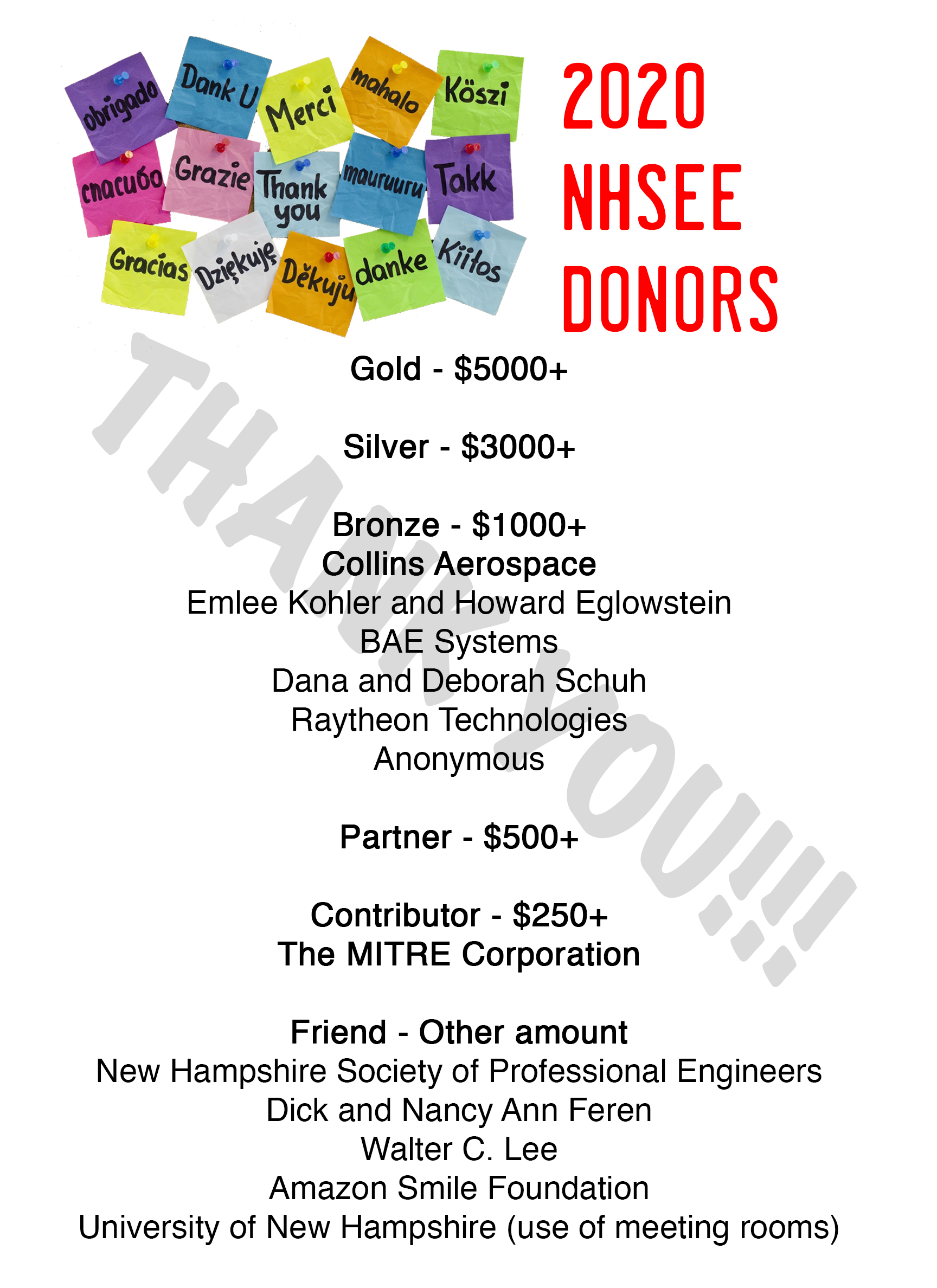Objective: To design Protective equipment for small groups.
Purpose: To encourage research and experimentation in engineering, and to design a device or combination of devices that will reduce germ transmission in small group classroom gatherings that involve discussion and/or experimental work.
Rules: (See also: Website > Students > Gen Info > Research Rules, and Rules FAQ)
1. This is an individual or team event. A team can have a maximum of three students (a leader and two others).
2. The intended location for the use of the protective equipment is a classroom. This equipment is to be used for relatively small groups, and where it is sometimes important to get closer than standard distancing guidelines. For the classroom, assume a group of up to approximately 6 students at a single table to work on a project. They might sometimes be about 2 or 3 ft apart, and might sometimes want to be able to manipulate the same items for experimentation.
3. The size, shape, materials, structure, etc for this challenge can be chosen by the designers. The designers can also choose what combination of factors are most applicable. The goal is to allow small groups to get together, and to carry on work or discussions, but to severely limit/reduce the likelihood of germ transmission.
a. As the equipment is developed, students should test the parts to determine effectiveness. Those results will be part of the project report. The methods of testing should be explained and be able to be shown through picture(s) and/or video(s). For example, one possibility might be to place some kind of receptor inside the equipment, spray a mist toward the equipment, and then record/note how much (if any) mist gets on the receptor. Also, the amount and speed of the spray can be varied to provide a broader test. (Note: The receptor can be simply a block or cylinder of material that could somehow show mist that touches its surface.) Feel free to develop other methods to demonstrate effectiveness. This is just an example.
b. Another factor to consider is making the equipment easy to clean. This could include basic cleaning methods and supplies that are readily available, and consider simplicity/speed of use. It is also important to make sure the materials and methods are effective.
c. Equipment should also be easy to obtain and/or repair. Also, equipment and effectiveness need to be researched, with results recorded so they can be applied to the project and presented for the judges as support for the specific items developed by the students.
d. It is also OK to use existing protective equipment in combination with equipment developed for this project.
4. Notebooks are required for the team members to enter their ideas, research information and sources, experimentation procedures and data, graphs, analyses, and conclusions. Each student may keep their own notebook, or there may be one notebook for the team. All entries must be dated, and initialed by the person making the entry. Once an entry is made, it is not destroyed. An incorrect entry will be crossed out with a single line, and followed by a corrected entry (or a note of where to find the corrected entry or entries).
5. At the end of the project, details from the notebook (or from each notebook if more than one) will be extracted and combined to make a single presentation on the display poster. Pictures may be taken of notebook pages to show work in progress and/or results. A summary sheet of notebook contents can be created and shown to assist judge review. (Note: for projects done by a single individual, this could be equivalent to an abstract, but for team projects an abstract draws on data from all their notebooks.)
6. Each team is to provide a project display that must be within the following maximum sizes (but it could be smaller):
Depth (front to back): 30 inches or 76 centimeters
Width (side to side): 48 inches or 122 centimeters.
Height (floor to top): 108 inches or 274 centimeters.
7. Project display (15 points) must be well constructed and organized, and should include the following, which will be scored during the presentation review process:
a. Display is within size limitations;
b. Notebooks are present.
c. Poster shows title and “the challenge” at the top;
d. Display is neat, organized & appealing, and describes the main focus of the project.
e. Spelling and sentence structure are correct;
f. Presentation is clear and well prepared
g. Prediction for how well the project will perform. (Based on experimental data)
h. The team described other approaches they could have used, and/or other areas they could have investigated
8. Review of the project. This fair will be done in a virtual manner, so the judges will not be talking directly to the participants. Instead, the judges will be reviewing a virtual presentation prepared by the student(s). During the review (15 points), the following will be considered:
a. Presence and quality of the required notebooks, and bibliography of references.
b. The team’s understanding of key parts of their challenge, and the underlying science.
Preparing the presentation for judge review: Judges will view your project virtually rather than in person. Provide photographs and videos showing the equipment structure and use. It is OK to use rulers to show measurements. Provide labels if there might be any question about materials, structure, or usage.
Scoring the Competition: Points possible are 70.
Scoring Guidelines:
- a. How effective is the equipment? How well does it prevent the possible spread of germs from one person out to others, and how well does the equipment for a person prevent/reduce the amount of outside germs getting to them?
- b. Where possible, reduce complexity and emphasize simplicity. One important factor here includes how quickly and easily the equipment can be packaged, unpackaged, and set up for use. A second important factor is reducing the overall dollar cost of the equipment.
- c. Creativity in development of how the equipment could be used.
Scoring the project display and interview:
(See also: Website > Students > Gen Info > Judging expectations and Judging forms)
a. The project display and review are worth a total of 30 points, and are scored separately from the competition.
b. The project display will be scored based on the criteria under Rules, #7 (also see score sheet).
c. The review of the presentation will be scored based on the criteria under Rules, #8 (also see score sheet).
Overall Scoring of the Event:
The maximum score possible for this event will be 100 points. The overall score will be based on the sum of the points earned by a team during the competition plus the display judging and interview.
COVID CHALLENGE SCORE SHEET
Competition
Consider each of two major factors: effectiveness of the equipment, and simplicity/cost of it.
Effectiveness: Possible points. 40 Earned points _______
Simplicity/cost: Possible points. 30 Earned points _______
TOTAL score for competition: Possible points: 70
Earned points _______
Scoring Display and Presentation
Project display is well constructed and organized 1. Display is within size limitations; 2. Poster shows title and the challenge at the top; 3. Display is neat, organized & appealing 4. Spelling and sentence structure are correct; 5. Presentation is clear and well prepared 6. Team described other approaches they could have used, or other areas they could have investigated: 15 points possible
During the review of the presentation, the following will be considered: 1. Presence and quality of the required notebooks (and bibliography of references) 2. the quality of answers to the judges’ questions; 3. the team’s understanding of key parts of their challenge, and the underlying science. 15 points possible
30 points possible for display and presentation
| Total points possible for competition plus display and presentation = 100 Total points earned ________ + _________ + __________ = __________ |




